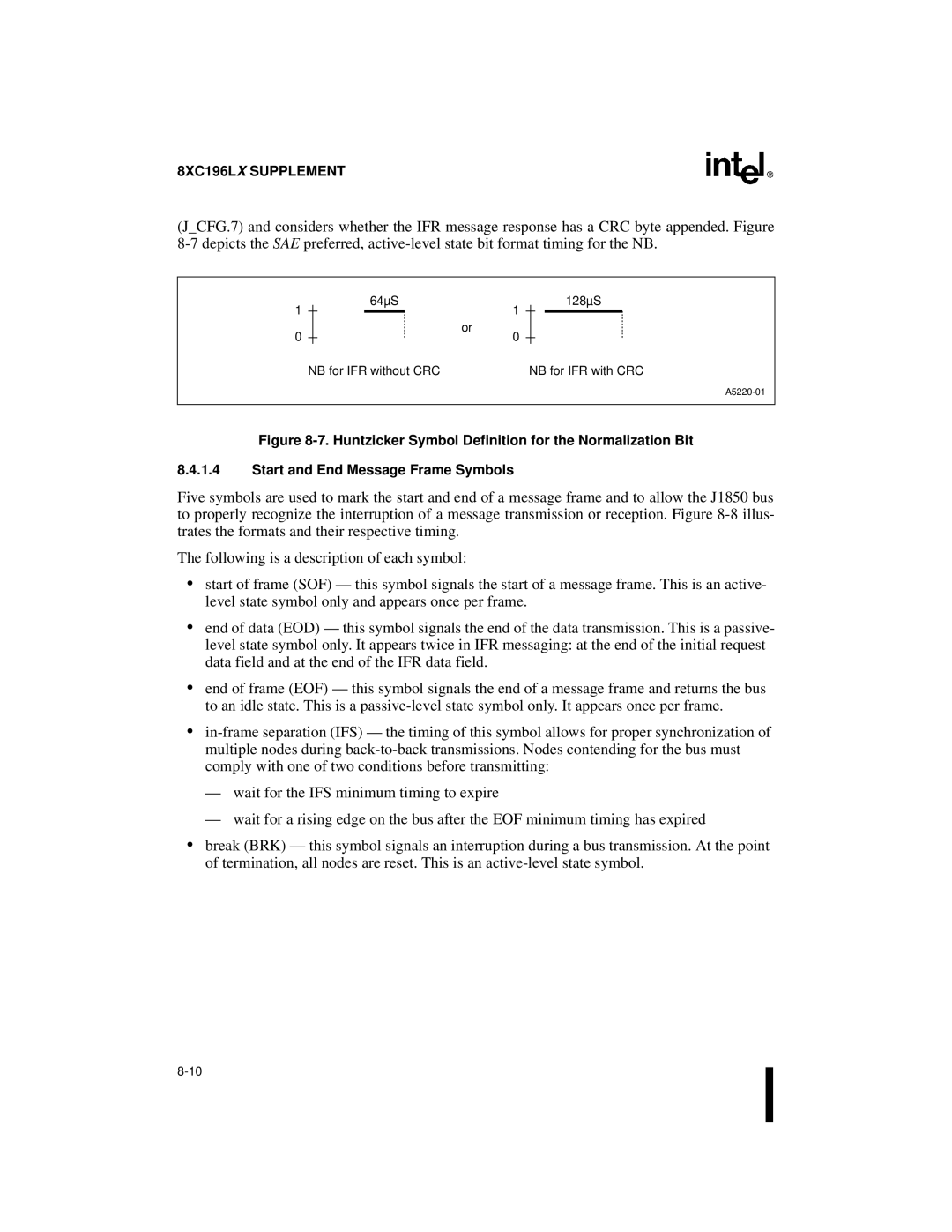
8XC196LX SUPPLEMENT
(J_CFG.7) and considers whether the IFR message response has a CRC byte appended. Figure
1 |
|
| 64µS | 1 |
|
| 128µS |
|
|
|
|
|
| ||
|
|
|
| or | |||
0 |
|
|
| 0 |
|
|
|
| NB for IFR with CRC | ||||||
NB for IFR without CRC |
|
| |||||
Figure 8-7. Huntzicker Symbol Definition for the Normalization Bit
8.4.1.4Start and End Message Frame Symbols
Five symbols are used to mark the start and end of a message frame and to allow the J1850 bus to properly recognize the interruption of a message transmission or reception. Figure
The following is a description of each symbol:
•start of frame (SOF) — this symbol signals the start of a message frame. This is an active- level state symbol only and appears once per frame.
•end of data (EOD) — this symbol signals the end of the data transmission. This is a passive- level state symbol only. It appears twice in IFR messaging: at the end of the initial request data field and at the end of the IFR data field.
•end of frame (EOF) — this symbol signals the end of a message frame and returns the bus to an idle state. This is a
•
—wait for the IFS minimum timing to expire
—wait for a rising edge on the bus after the EOF minimum timing has expired
•break (BRK) — this symbol signals an interruption during a bus transmission. At the point of termination, all nodes are reset. This is an
